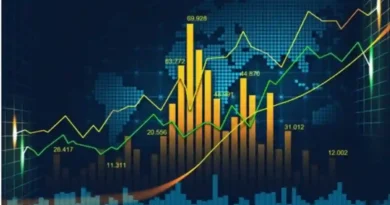The Evolution of Algorithmic Trading: From Humans to Robots
In the realm of financial markets, the evolution of trading methodologies has been a story of innovation, adaptation, and technological advancement. From the traditional practices of open outcry trading to the rise of electronic trading platforms, the landscape of financial markets has undergone a profound transformation. At the forefront of this evolution lies algorithmic trading, a paradigm-shifting approach that leverages computational algorithms to execute trades with speed, precision, and efficiency. This article delves into the rich history and transformative journey of algorithmic trading, tracing its evolution from human-driven strategies to the emergence of sophisticated trading robots.
The Genesis of Algorithmic Trading:
The roots of algorithmic trading can be traced back to the late 20th century when advancements in computing technology and mathematical modeling laid the groundwork for automated trading systems. Early forms of algorithmic trading emerged in the form of rule-based strategies and mathematical models employed by institutional investors and proprietary trading firms. These strategies, often implemented through simple algorithms, aimed to capitalize on inefficiencies in the market, exploit arbitrage opportunities, or execute trades based on predefined criteria.
The Advent of Electronic Trading:
The proliferation of electronic trading platforms in the 1990s marked a significant milestone in the evolution of algorithmic trading. With the advent of electronic communication networks (ECNs) and electronic trading platforms, traders gained unprecedented access to real-time market data, order execution, and liquidity pools. This shift from traditional floor-based trading to electronic trading paved the way for the automation of trading processes and the development of algorithmic trading strategies.
The Rise of High-Frequency Trading (HFT):
The dawn of the 21st century witnessed the emergence of high-frequency trading (HFT) as a dominant force in financial markets. HFT encompasses a subset of algorithmic trading strategies characterized by ultra-fast execution speeds, high order-to-trade ratios, and fleeting market participation. Leveraging cutting-edge technology, co-location facilities, and low-latency trading infrastructure, HFT firms capitalize on microsecond-level price discrepancies, arbitrage opportunities, and market inefficiencies.
The Role of Quantitative Analysis and Machine Learning:
The evolution of algorithmic trading has been paralleled by advancements in quantitative analysis, statistical modeling, and machine learning techniques. Quantitative traders harness mathematical models, statistical algorithms, and historical data to develop predictive trading strategies and identify patterns in market behavior. Machine learning algorithms, including neural networks, decision trees, and genetic algorithms, enable traders to adaptively learn from data, optimize trading strategies, and uncover hidden insights in vast datasets.
Transition to Forex Robot Trading:
The integration of algorithmic trading with the foreign exchange (Forex) market has led to the proliferation of Forex robot trading systems. Forex robots, also known as expert advisors (EAs), are software programs designed to automate the process of executing trades in the Forex market. These robots utilize predefined algorithms, technical indicators, and risk management parameters to analyze market conditions and execute trades with precision and efficiency. Forex robot trading has democratized access to automated trading solutions, enabling retail traders to leverage sophisticated algorithms and compete in the global currency markets.
Challenges and Controversies:
Despite its transformative impact, algorithmic trading has not been immune to challenges and controversies. Concerns surrounding market manipulation, systemic risk, and technological failures have prompted regulatory scrutiny and industry debate. Flash crashes, algorithmic glitches, and disruptive trading practices have underscored the need for robust risk management frameworks, regulatory oversight, and market surveillance mechanisms to safeguard market integrity and stability.
The Future of Algorithmic Trading:
Looking ahead, the future of algorithmic trading promises continued innovation and evolution driven by advancements in technology, data analytics, and artificial intelligence. Quantum computing, blockchain technology, and decentralized finance (DeFi) are poised to reshape the landscape of financial markets, offering new opportunities and challenges for algorithmic traders. As algorithmic trading continues to evolve, the convergence of human expertise, technological innovation, and data-driven insights will shape the future of finance and redefine the way we interact with financial markets.
Conclusion:
The evolution of algorithmic trading represents a transformative journey from human-driven strategies to automated trading systems powered by sophisticated algorithms and advanced technology. From the early days of rule-based trading to the emergence of high-frequency trading and Forex robot trading, algorithmic trading has revolutionized the way we trade financial assets. As we navigate the complexities of modern financial markets, the fusion of human ingenuity with technological innovation will continue to drive the evolution of algorithmic trading, shaping the future of finance and unlocking new frontiers of opportunity in the global marketplace.




